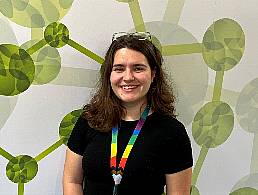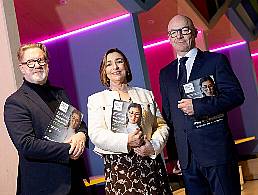Managing director at Accenture Applied Intelligence, Oonagh O’Shea, discusses her passion for bringing life sciences and analytics together.
Oonagh O’Shea is a managing director in Accenture Applied Intelligence, where she leads the life sciences analytics team.
She believes that, traditionally, the life sciences industry is “a conservative adopter of technology” but with ambition and willingness to adapt, companies “can deliver tremendous growth and improve patients’ lives”.
Here, she discusses how she sees her field being impacted by the emerging trends of 2020, and why she’s passionate about helping Accenture’s life sciences clients “on their journey to becoming true data-driven, digital plants”.
‘Through data, we can break down the traditional silos in life sciences, from R&D through to manufacturing, quality and the patient’
– OONAGH O’SHEA
What is your current position and what kind of work does it involve?
My role involves working with leading life sciences companies, particularly focusing on the role of data and data science in manufacturing and quality operations. As an example, I work with clients on their innovation agendas, bringing thought leadership and identifying the technology and analytics that can solve their most pressing challenges.
I also lead the delivery of new capabilities in manufacturing and quality, and help our clients on their journey to becoming true data-driven, digital plants.
Do you see any big changes taking place in your field in the next 12 months?
The life sciences sector is already in a significant period of change; we see the market shifting from high-volume, low-mix production to low-volume, high-mix in the fight against rare diseases. We are getting closer to the patient and understanding individual needs, moving more and more towards personalised medicine.
It’s an exceptionally exciting space to be in, but it does of course bring challenges on how a more complex supply chain is managed and maintaining a stable supply of these critical drugs on the market.
How is data science relevant for life sciences?
Through data, we can break down the traditional silos in life sciences, from R&D through to manufacturing, quality and the patient.
At a foundational level, we can bring data from disparate source systems and surface it in a single portal, enabling quicker decision-making. We can enhance this capability by adding specific data science use cases, such as process state monitoring and yield optimisation to drive up production throughput and yield, and equipment analytics to increase asset utilisation and drive down maintenance costs.
The range of data science capabilities for life sciences ultimately offers enhanced process control and stability and, critically, improved regulatory compliance.
Are there any major benefits you see to incorporating the two fields?
By bringing the discipline of data science to the life sciences industry, we are quite literally changing people’s lives. We are seeing a record number of new drugs being approved by regulators, and the FDA is accelerating the approval of new drugs, such as in oncology.
By unlocking the value in their data with data science, we can enable the manufacturers to meet the demands this acceleration brings and to protect patients while reassuring regulators and driving efficiencies.
What about challenges in bringing them together?
We do still see siloed activity in the life sciences industry and, often, limited visibility across functions. This can reduce the time to decision, for example in releasing product to market.
We have the capabilities to open up the lines of communication and also our clients are more than willing to do so. However, we are also aware of regulatory constraints and reservations with the emphasis on patient safety through data integrity across the industry. We must ensure that patient safety is number one on the agenda as we transition to this new era in life sciences.
Do you have any advice for people working in either industry on embracing the changes to come?
It is a time of great change in life sciences and, as with other leading industries, we must embrace this transition. Traditionally, the life sciences industry is a conservative adopter of technology.
However, with a new willingness to adapt, we can deliver tremendous growth and improve patients’ lives.
Do you have any personal career goals for 2020?
In addition to leading the life sciences applied intelligence team, I will also lead our Irish data science capability in 2020. As part of that, I want to promote a culture of inclusion and at the heart of that is our Women in Data Science programme.
We had a fantastic experience running this programme in Accenture last year and we are aiming for bigger and better again this year with applications opening soon – so watch this space.
Do you have any resources you can suggest for keeping up with emerging trends in data science and life sciences?
For specific trends on manufacturing and when looking for what to expect in life sciences, I tend to look to other industries. For example, there are really exciting things happening in the automotive and aerospace industries from an Industry X.0 perspective with IIoT and AI, and life sciences will quickly follow suit.
In the data science world, I personally love to listen to the Data Skeptic podcast – it’s an oldie but a goodie and often keeps me company on my commute.




